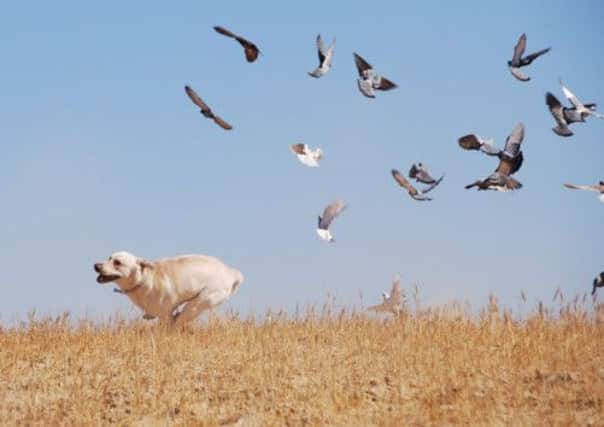Pets by day and predators by night take a toll on wildlife


As dusk descends over the streets and gardens of suburbia, a secret militia is mobilising to embark on a killing spree.
These assassins are silent and deadly, so efficient that the death toll of their quarry runs into the hundreds of millions each year.But, despite their murderous tendencies, these relentless predators are also our best friends.
Advertisement
Hide AdAdvertisement
Hide AdThat cats are ruthlessly proficient killers of birds and small mammals is a fact that many pet owners tend to push to the back of their minds. But recent research from America, revealing that cats kill up to 3.7bn birds and 20bn mammals each year, has raised questions about the impact of the UK’s nine million domestic felines on our wildlife.
A Mammal Society report conducted a decade ago found that UK cats kill 275m prey each year, with 55m of these being birds. House sparrows, blue tits, blackbirds and starlings sit at the top of a cat’s bird menu.
These figures seem enormous but, argue the RSPB, many millions of birds die naturally each year through starvation, disease and other predation.
Cats are non-native and in urban areas they are often kept at unnaturally high densities, making them by far the most numerous predators in the UK – a fact that does concern some wildlife groups.
Advertisement
Hide AdAdvertisement
Hide AdLaura Drake, surveys co-ordinator at The Mammal Society, explains: “Cats are a predator in our ecosystem, which unlike wild predators are not controlled by wild prey numbers. Domestic cats have an additional in-house food source so they are not limited by the number of birds and mammals in the local environment.
“Therefore if the population becomes great enough in one neighbourhood for example, they may have an impact on the local wildlife populations.”
The presence of two particular birds on the cat hit-list has caused concern. House sparrow populations have collapsed by a staggering 71 per cent between 1977 and 2008, resulting in this once ubiquitous bird being classed as a red list species – a status reserved for birds of the highest conservation priority.
Starlings have suffered a similar fate, with declines meaning this much-loved garden favourite has also been added to the red-list.
Advertisement
Hide AdAdvertisement
Hide AdChanges in urban habitat are cited as a major reason for these declines, but could the added pressure of an expert predator kept at unnaturally high levels be adding unwanted pressure?
The RSPB insists that there is “no clear evidence” linking the declines of sparrows and starlings to domestic cat populations at present.
But many wildlife lovers believe enough is enough and have called for action to reduce the impact of our feline friends.
Cats hunt mainly from dusk to dawn; research suggests if they are prevented from going out at night, then far fewer birds and mammals will be killed. The Mammal Society and naturalists including Springwatch presenter Chris Packham have called for cat curfews to be put in place to stop cats going out on the prowl during the small hours.
Advertisement
Hide AdAdvertisement
Hide AdDrake says: “Cats are expert hunters, but we must not demonise the animal itself.
“The Mammal Society strongly advocates responsible cat ownership to include spay and neutering, keeping them in at night if practical, placing a bell on their collars, getting cats from rescue centres as opposed to breeders, and limiting the number of cats per household to one or two.”
It’s not just cats that pose a threat to our wildlife. The UK’s growing army of dogs, currently estimated to stand at around nine million, can also cause problems during the nesting season, particularly on heathland or coastal habitats where nightjar, woodlark and tern colonies are particularly vulnerable.
“Having a dog to walk is a great reason to get out into the countryside,” says RSPB wildlife advisor Richard James. “However, they can potentially disturb wildlife or livestock so it is important they are kept under control. Ground nesting birds are particularly vulnerable to disturbance. They may be forced from their nests, which would leave eggs or chicks exposed.
Advertisement
Hide AdAdvertisement
Hide Ad“Birds tend to nest between March and September, but there can be problems outside the breeding season too, particularly in cold weather.
“The presence of a dog could distress the birds and cause them to waste valuable energy at a time when food is hard to come by. This can be significant problem for wildfowl and waders in particular because they can struggle to find areas of unfrozen water in cold weather.”